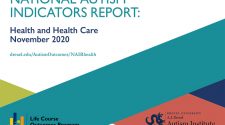Globally, Alzheimer’s disease and other forms of dementia are a major burden on individuals and communities. To make matters worse, there are few treatments to combat these complex illnesses. Even the causes of dementia are widely debated. Sadly, clinical trials for drugs to stop or even slow its progress have come up short. Taking a different tack, some experts hope to intervene before people are diagnosed with dementia by encouraging lifestyle changes.
What is dementia and what makes it so complex?
Dementia describes groups of specific diseases characterized by symptoms such as memory loss. The most common type of dementia is Alzheimer’s disease (AD). People with AD have plaques in their brains made of up of tangled proteins, and many researchers have hypothesized that these plaques are the cause of the disease.
Another common type of dementia is vascular dementia. This is thought to be induced by damaged blood vessels in the brain, such as from a stroke.
Experts believe both genetic factors (variants of genes passed down from mom and dad) and modifiable lifestyle factors (diet, pollution, infection, smoking, physical activity) all play a role in the development of dementia, perhaps in concert.
What factors might affect dementia risk?
Genes – which are not considered modifiable —and lifestyle factors like physical activity and diet – which are considered modifiable – play potential roles in different forms of dementia.
A recent study in JAMA attempts to estimate how much genetic and lifestyle factors influence risk for dementia by querying individuals who pledged to be part of a UK-based “biobank.” Biobanks link large collections of biological information, such as genetics, with health and disease status gleaned from medical records. Using data in large biobanks, scientists can look at how the environment—which includes lifestyle choices —and genetics work together to increase (or decrease) risk for disease.
In the JAMA study, researchers tapped hospital records and death registries to collect diagnoses in 200,000 white British individuals age 60 or older.
But how can you measure “lifestyle” and genetic risk?
The investigators hand-picked a list of common lifestyle factors, including smoking, alcohol consumption, physical activity, and diet, and created a score. A low score denoted a “bad” lifestyle. A high score denoted a “good” lifestyle.
However, taking this approach to measure lifestyle risk has several pitfalls:
- First, a vast number of factors comprise lifestyle and environment beyond smoking and physical activity. So any list may be arbitrary. In fact, our research team has argued that choosing a candidate list doesn’t capture our complex lifestyles and may lead to false findings. For example, what exactly constitutes a “healthy” diet?
- Second, using a score makes the individual roles of the factors unclear.
- Third, if connections between factors (for example, weight or history of other diseases) influence both the score and dementia, then the score might be a weak proxy for other variables that weren’t considered. In other words, if weight is associated with diet and dementia, then it is hard to untangle the association of diet.
To create the genetic risk score, the investigators used all genetic variants previously identified by a genome-wide association study (GWAS) of Alzheimer’s disease. These gene variants are strongly associated with patients who have Alzheimer’s compared with healthy controls). Using this information, the researchers constructed a polygenic risk score.
Lifestyle and genetics both play a small role in dementia
The lifestyle score was associated with dementia risk. Second, the genetic score was also associated with dementia. In other words, individuals with worse scores were at higher risk for dementia. The researchers further found that genetic risk and lifestyle appeared to act independently of each other. For example, individuals with both an unhealthy lifestyle and a high genetic risk score had almost two and a half times more risk than individuals with a low genetic score and healthy lifestyle.
However, this research was not designed to prove whether lifestyle and environment or genes cause dementia. A lot more could explain the differences between people who develop dementia. If populations at high genetic risk changed their lifestyle, and if the lifestyle was known to be the cause of AD (a big if), one out of 121 dementia cases would be prevented in 10 years. This is significant, but what number of lifestyle modifications would it take for the prevention of AD in 10, 50, or even 120 people? Do genetics even matter?
Second, the genes and lifestyle did not appear to work together — or they weren’t synergistic — in dementia risk. Specifically, this means that individuals with both bad genetic and lifestyle scores were not at risk for developing dementia any more than the sum of the parts or the individual scores alone.
New frontiers for AD prevention and treatment
New horizons for prevention and treatment might include how risk might be different for individuals of varied genetic ancestries and ethnicities (most genetic studies have predominantly focused on white individuals) both here in the US and abroad. The risk may also be different between males and females. Finally, biobanks can only describe association, not causation, between changes in lifestyle and dementia risk. To determine causation, randomized trials are required, and a new US-based randomized clinical trial called POINTER is now underway.
Trying to live a healthy lifestyle, despite its elusive definition, seems to be an obvious way to prevent dementia. What remains to be seen is how studies using biobanks can be informative about the millions of people who already may be suffering from the disease.
References
Why Most Published Research Findings Are False. PloS Medicine, August 30, 2005.
Repurposing large health insurance claims data to estimate genetic and environmental contributions in 560 phenotypes. Nature Genetics, January 14, 2019.
Studying the Elusive Environment in Large Scale. JAMA, June 4, 2014.
A Nutrient-Wide Association Study on Blood Pressure. Circulation, November 20, 2012.
Association of Lifestyle and Genetic Risk with Incidence of Dementia. JAMA, July 14, 2019.















